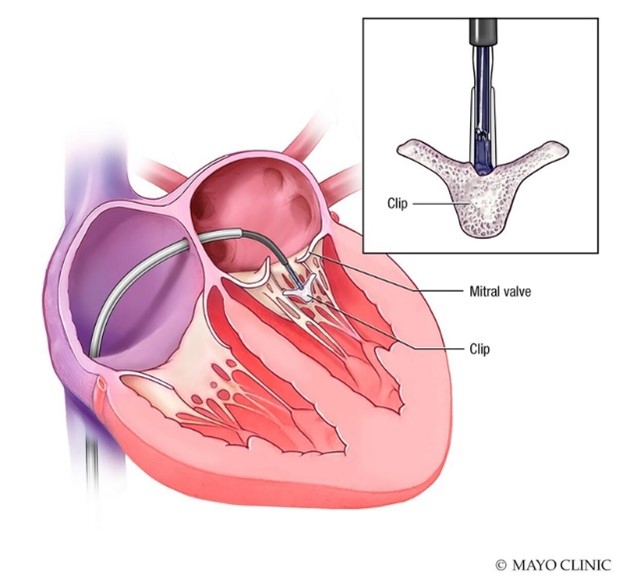
Cardiac Surgery
Heart Valve Disease Treatment in Eau Claire
In heart valve disease, also known as valvular heart disease, one or more of the valves in your heart doesn't work properly.
Your heart has four valves that keep blood flowing in the correct direction: the mitral, tricuspid, pulmonary and aortic valves. Each valve has flaps, or leaflets or cusps, that open and close once during each heartbeat. Sometimes the valves don't open or close properly, disrupting the blood flow through your heart to your body.
Treatment
Heart valve disease treatment depends on how severe your condition is, if you're experiencing signs and symptoms, and if your condition is getting worse. You may eventually need heart valve surgery to repair or replace the diseased heart valve. Doctors may suggest heart valve surgery even if you aren't experiencing symptoms, as this may prevent complications and improve outcomes. If you need surgery for another heart condition, your doctor may repair or replace the diseased valve at the same time.
Surgery options
Heart valve repair
Your heart care provider may often recommend heart valve repair when possible, as it preserves your heart valve and may preserve heart function. To repair a valve, surgeons may separate valve flaps that have fused, replace the cords that support the valve, remove excess valve tissue so that the valve flaps can close tightly, or patch holes in a valve. Surgeons may often tighten or reinforce the ring around a valve, or annulus, by implanting an artificial ring.
Heart valve replacement
If the valve can't be repaired, a cardiovascular surgeon may perform heart valve replacement. In heart valve replacement, your surgeon removes the damaged valve and replaces it with a mechanical valve, or a valve made from cow, pig, or human heart tissue. The latter is known as a biological or tissue valve.
Minimally invasive surgery
Heart valve surgery has been traditionally performed through a six to eight-inch incision made down the sternum and through bone and muscle. When possible, our cardiovascular surgeons perform minimally invasive valve surgery. During minimally invasive valve surgery, surgeons make a small incision between two ribs. The incision is about two and one-half inches long and does not require the splitting of the breastbone. In addition to less pain and quicker recovery for most patients, other benefits of minimally invasive surgery include:
- Lower risk of blood loss and transfusion requirements.
- Lower risk of infection.
- Smaller chest incision.
- Decreased critical care and hospital stay.
- Faster return to work and normal activities.
Transcatheter aortic valve replacement (TAVR)
Transcatheter aortic valve replacement (TAVR) is a minimally invasive procedure to replace a narrowed aortic valve that fails to open properly. This is called aortic valve stenosis. TAVR is sometimes called transcatheter aortic valve implantation (TAVI).
TAVR can relieve the signs and symptoms of aortic valve stenosis and may improve survival in people who can't undergo surgery or have a high risk of surgical complications.
During TAVR, doctors may access your heart through a blood vessel in your leg. A hollow tube, or catheter, is inserted through the access point. Your doctor uses advanced imaging techniques to guide the catheter through your blood vessels to your heart and into your aortic valve.
Once it's precisely positioned, special tools and the replacement valve are passed through the catheter. A balloon is expanded to press the replacement valve into place in the aortic valve. When your doctor is certain the valve is securely in place, the catheter is withdrawn from the insertion point.
TEER (transcatheter edge-to-edge repair)

Transcatheter edge-to-edge repair (TEER) of the mitral valve is used to treat mitral valve regurgitation or leaky mitral valve. A leaky valve occurs when a valve between heart chambers does not close completely and allows blood to leak backward. If the leakage is severe, not enough blood can move through the heart and to the rest of the body.
During the TEER procedure, the leaky valve is accessed through a catheter, or thin tube, through a vein of the leg to reach the heart. A small clip is then attached to the valve to help it close more completely, restoring normal blood flow through the heart.
Candidates for this procedure include heart failure patients that experience mitral valve regurgitation due to heart enlargement or patients who may not be candidates for open-heart surgery.